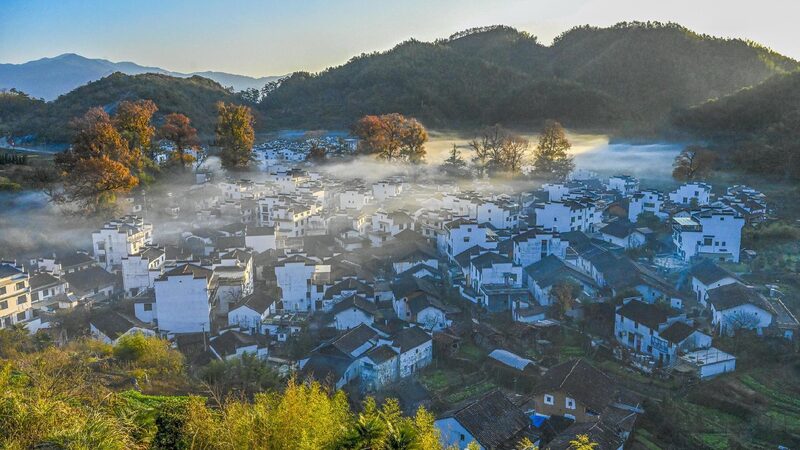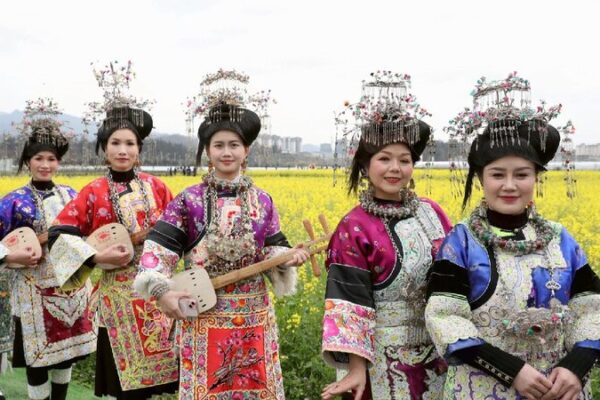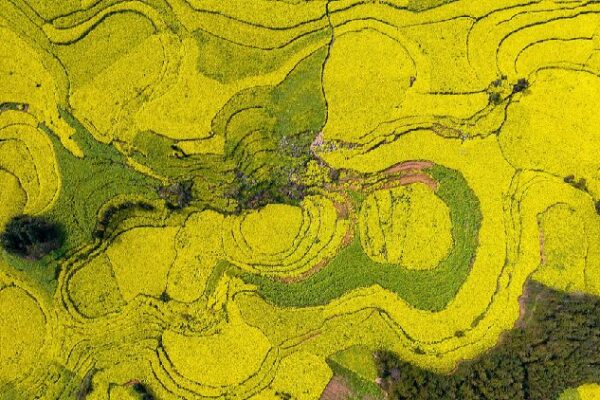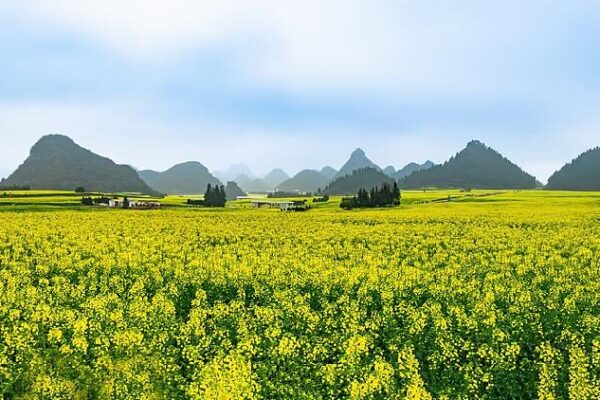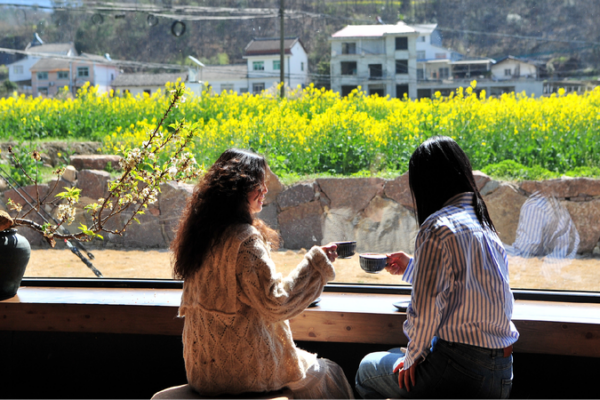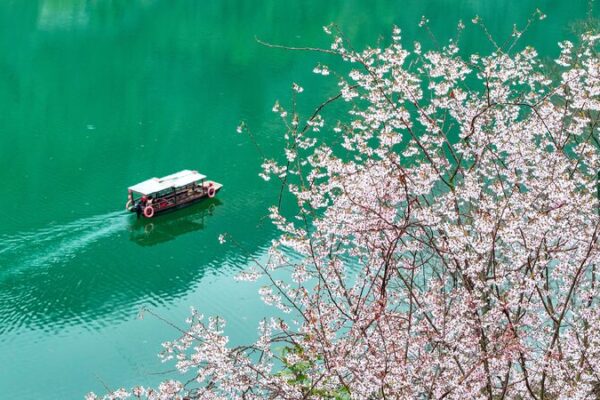As spring unfolds in mid-March, Wuyuan County in east China’s Jiangxi Province transforms into a breathtaking tapestry of gold. Spanning across 6,700 hectares, vast fields of rapeseed flowers burst into bloom, painting the rolling hillsides with vibrant hues that captivate visitors from across the country.
Known as one of China’s most picturesque rural destinations, Wuyuan’s charm extends beyond its natural beauty. Scattered throughout the county are 30 traditional villages, home to historical sites and ancient buildings dating back to the Ming and Qing Dynasties (1368-1911). These well-preserved relics offer a glimpse into China’s rich cultural heritage.
In 2012, local authorities initiated measures to protect and develop these ancient villages, encouraging adoption and relocation efforts to preserve their historical significance. With the expansion of China’s high-speed rail network, Wuyuan has shed its once-remote status, becoming an accessible haven that even attracts travelers from overseas.
Wuyuan’s story is a testament to the transformative power of rural revitalization and poverty alleviation initiatives in China. Once economically stagnant, this county of over 300,000 residents has undergone a remarkable transformation through land reforms, infrastructure upgrades, and innovative development models.
Since the early 2000s, Wuyuan has embraced an “agriculture-tourism integration” approach. By combining traditional farming with tourism, the county has developed distinctive industries centered around rapeseed flower and chrysanthemum cultivation. This synergy has not only boosted agricultural productivity but also spurred the growth of rural homestays and local businesses.
The impact on the local community has been profound. The annual average per-capita income has soared from less than 3,000 yuan (about $400) in 2002 to over 26,000 yuan (about $3,600) in 2023. In the same year, Wuyuan welcomed more than 28 million visitors, solidifying its status as a premier tourist destination in rural China.
As China’s rural revitalization efforts gain momentum, Wuyuan continues to innovate by transforming its natural and cultural resources into a thriving, diverse tourism industry. One standout initiative is a nature education hub operated by a group of young graduates, all under the age of 30. Offering hands-on activities like wetland exploration, bird nest building, and microscopic observations, the hub has become a sought-after destination, with eager participants booking spots three months in advance.
“We’re using Wuyuan’s natural beauty and our expertise to make science fun and accessible,” said Liu Zhilong, who runs the nature education center. “So far, over 60,000 children and 10,000 parents have joined our ‘nature lessons,’ experiencing the wonders of the environment firsthand.”
These accomplishments are rooted in Wuyuan’s innovative “mini nature reserve” system, launched in the early 1990s. Today, the county boasts 193 such reserves covering 43,600 hectares, safeguarding rare species like the critically endangered blue-crowned laughingthrush. This commitment to conservation has not only preserved biodiversity but also fueled economic growth, with birdwatching tourism generating over 100 million yuan (about $14 million) in 2023.
“We’ve successfully turned our ecological strengths into economic benefits,” said Party chief Xu Shubin. “Villagers, now seeing the tangible rewards of green development, are more dedicated than ever to protecting our beautiful homeland.”
This dedication has fostered a harmonious cycle between people and nature. As the environment thrives, so does the economy, and the community’s success further inspires efforts to preserve their surroundings. “Protecting the environment drives the green economy,” Xu explained, “and the resulting success inspires villagers to care even more for their natural surroundings, promoting true harmony between people and nature.”
Reference(s):
Rural revitalization composes symphony of ecology in E China's Wuyuan
cgtn.com
